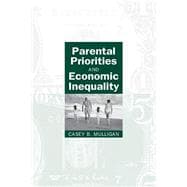
| List of Illustrations | |
| List of Tables | |
| Acknowledgments | |
| The Argument for Parental Priorities | |
| Indifference Curve Diagrams as Models of Parental Priorities | |
| Two Models of Opportunity and Intergenerational Mobility | |
| How Altruism Is Influenced by Economic Status | |
| Taxation and Intergenerational Mobility in the Three Models | |
| The Evolution of Economic Inequality in the United States | |
| The Intergenerational Dynamics of Consumption, Earnings, Income, and Wealth | |
| Borrowing Constraints and the Persistence of Inequality | |
| The Biological Origins of Altruism | |
| Classical Discussions of Altruism | |
| Intergenerational Altruism and Inequality within the Family | |
| Altruism and Giving beyond the Family | |
| Altruism and the Principal-Agent Problem | |
| Conclusions A Guide to Mathematical Notation | |
| References | |
| Index | |
| Table of Contents provided by Publisher. All Rights Reserved. |
The New copy of this book will include any supplemental materials advertised. Please check the title of the book to determine if it should include any access cards, study guides, lab manuals, CDs, etc.
The Used, Rental and eBook copies of this book are not guaranteed to include any supplemental materials. Typically, only the book itself is included. This is true even if the title states it includes any access cards, study guides, lab manuals, CDs, etc.